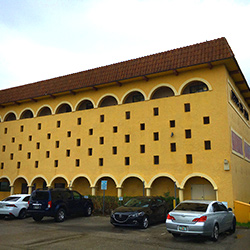 Finasteride: Comparisons with Other Hair Loss Medications
Finasteride: Comparisons with Other Hair Loss Medications
Understanding Finasteride: Mechanism and Effectiveness
Finasteride, an oral Rx, operates by interfering with the androgen pathway, targeting the enzyme 5-alpha-reductase which converts testosterone to dihydrotestosterone (DHT). DHT is infamous for its role in hair follicle miniaturization, leading to hair loss particularly in men. By inhibiting this enzyme, Finasteride effectively reduces DHT levels, fostering an environment where hair can regrow and thrive. It's a potent solution in the 'Comp' of hair loss treatments, recognized for significant results in maintaining and regaining hair density.
Effectiveness studies illustrate Finasteride's impact: within a year, about 65% of users notice improvement, while 83% experience halted progression of hair thinning. The ease of oral administration means it's favored by those wary of topical applications, promising a streamlined addition to their daily routine without the complexities of a topical 'Elixir'.
| Aspect | Finasteride |
|---|---|
| Form | Oral |
| Mechanism | DHT Inhibition |
| Effectiveness | 65% see improvement, 83% halt progression |
Minoxidil Vs. Finasteride: Topical Versus Oral Solutions

While finasteride typically arrives as a hard copy in tablet form requiring a script, minoxidil offers a topical option that's available OTC, appealing for those preferring direct application. Users often see minoxidil as an immediate, more hands-on approach to combating hair loss, akin to a pharm party where solutions mingle, but without needing a pharmacist’s precise count and pour. However, finasteride's systemic action provides a potent alternative, targeting hormonal root causes from within, ensuring more comprehensive and widespread results.
Comparing Finasteride and Dutasteride: Potency and Usage
Finasteride, a popular medication for male pattern baldness, works by inhibiting an enzyme crucial for converting testosterone into dihydrotestosterone (DHT), a hormone responsible for hair loss. Dutasteride shares a similar mechanism but targets a broader range of this enzyme. While both drugs are effective, dutasteride is often considered more potent due to its wider inhibition, offering significant hair regrowth for some individuals. However, this enhanced potency might contribute to a higher incidence of 'Sticker Shock' when it comes to potential side effects. When choosing between finasteride and dutasteride, consulting your White Coat is crucial to navigate the 'Sig' and determine the most suitable path for hair restoration.
Natural Alternatives: Can Finasteride Be Replaced?

Exploring natural alternatives to finasteride offers intriguing possibilities for addressing hair loss without a script. Options like saw palmetto, green tea, and pumpkin seed oil are touted for their potential benefits, largely due to their ability to block DHT, similar to finasteride. However, these natural elixirs often fall short of producing the same level of efficacy. Studies remain limited, and results can vary widely, leading some to consider them more of a comp than a solid replacement. It's essential to conduct a thorough Meds Check with a healthcare provider to understand potential risks and benefits before abandoning the proven effectiveness of finasteride.
Cost Comparison: Which Hair Loss Treatment Is Affordable?
Tracking down the cost-effective hair loss treatment can be like navigating a Drive-Thru menu of options, with finasteride leading the pack in affordability. When comparing with other popular treatments, scripts for finasteride often sit comfortably at a lower price point, keeping monthly expenses more manageable. Generics play a key role here, as the non-brand versions make this treatment more accessible. Beyond the counter, patients may encounter both sticker shock and relief, depending on insurance coverages and pharmacy promotions.
| Medication | Average Monthly Cost (USD) | Availability |
|---|---|---|
| Finasteride | $10 - $30 | Prescription, Generics Available |
| Minoxidil | $10 - $15 | OTC |
| Dutasteride | $30 - $50 | Prescription |
| Natural Alternatives | Varies Widely | OTC |
While some may experience label sticker shock when encountering non-generic scripts, finasteride's overall cost-saving potential remains significant. When placed in Pharmageddon's competitive market, finasteride often verges on being less costly than its counterparts, providing a compelling case for those seeking effective, affordable treatment. Shoppers should verify their options and, perhaps under the quiet guidance of a white coat, choose the most budget-friendly yet efficacious solution.
Side Effects: Finasteride and Its Competitors in Focus
Navigating the landscape of hair loss treatments, one must consider the side effects that come with each option. Finasteride, commonly found in the Rx aisle, is known for potentially causing reduced libido and mood changes. On the other hand, Minoxidil's topical application is correlated with scalp irritation, while its oral counterpart can lead to fluid retention. When comparing these to Dutasteride, another popular choice, users report a higher incidence of sexual dysfunction due to its potency, akin to a cocktail of side effects.
For those venturing into the lesser-known sphere of natural alternatives, these options may present fewer side effects. However, the unpredictability synonymous with these "elixirs" may leave one at the mercy of a so-called "quack." Ultimately, understanding these potential side effects assists individuals in making informed decisions tailored to their specific needs and tolerance levels.
Visual Health & Surgical Center

Visual Health & Surgical Center
Palm Springs FL 33461
(561) 964-0707
